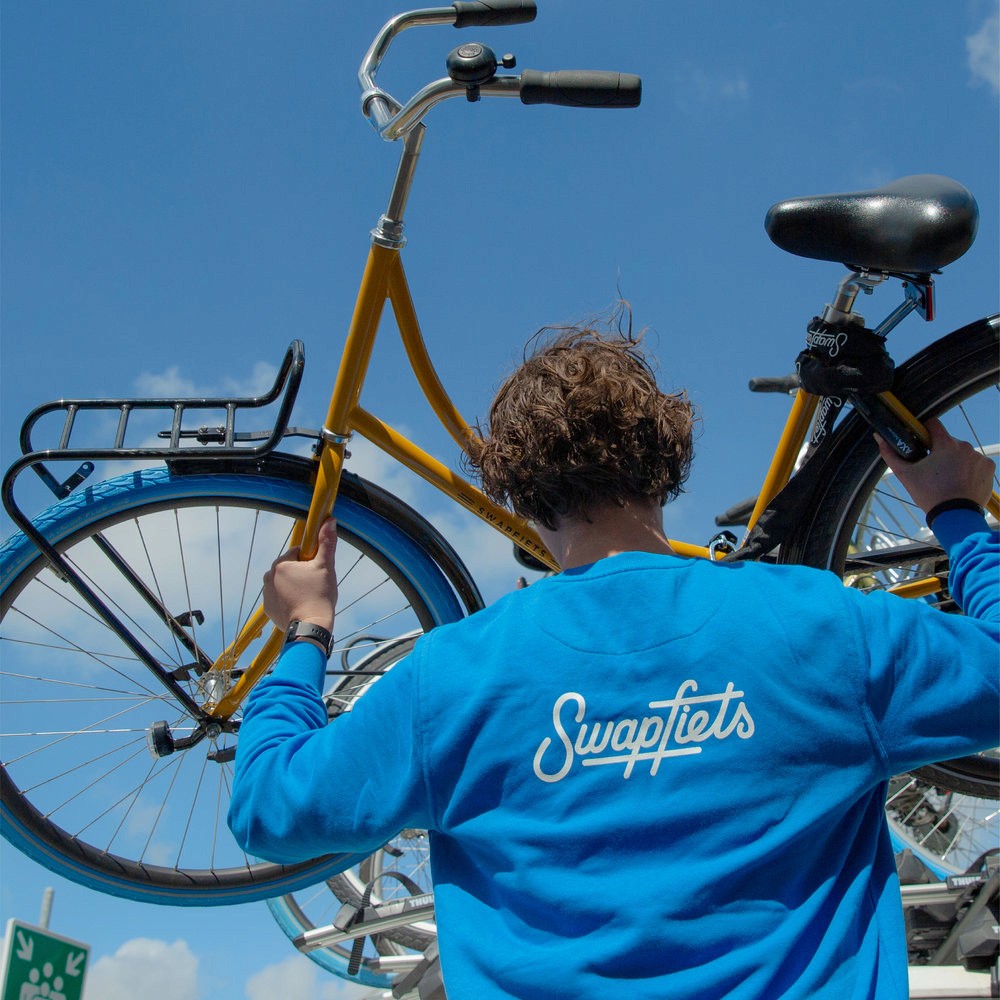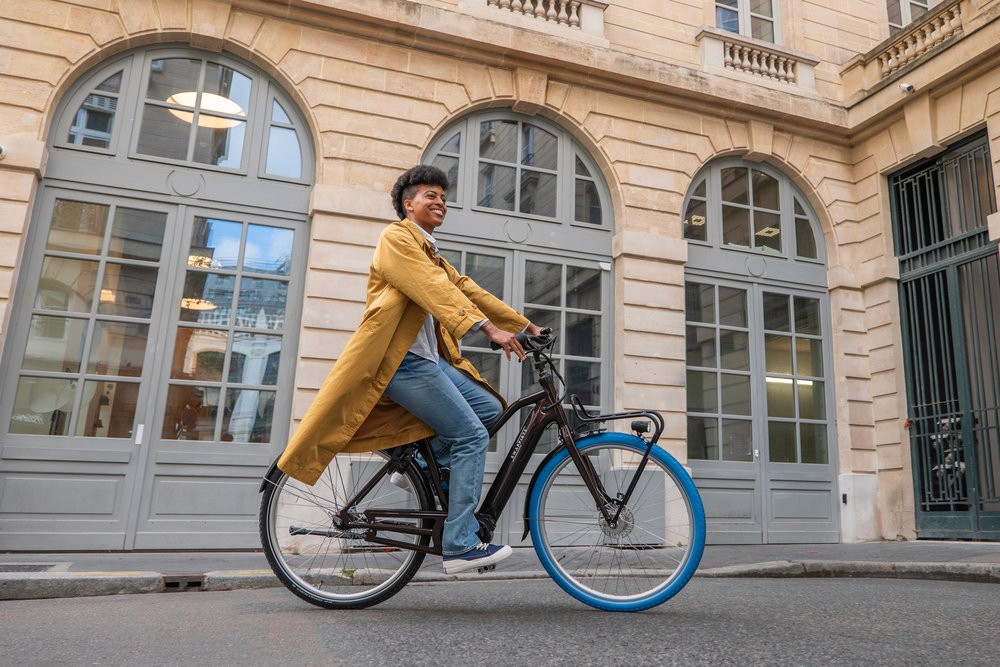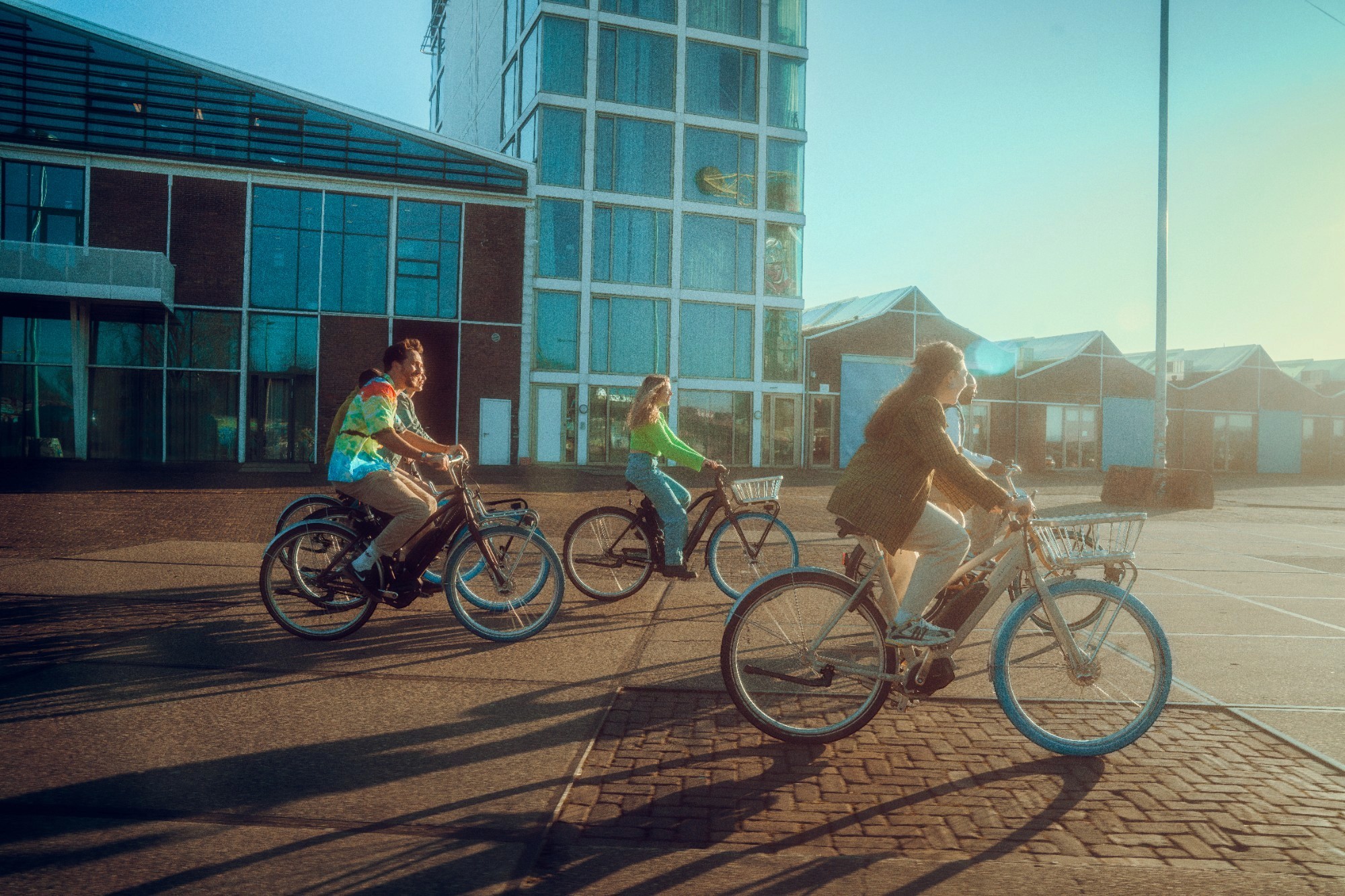On the road to 100% circularity - part 3
On the road to 100% circularity; behind the scenes - part 3
At Swapfiets we aim high: we will have 100% circular bikes by 2025. How? Well, in our previous blog posts we have already shared a sneak peek on the steps we take in the design and use phase. But in the process of becoming 100% circular, we also need to talk about closing the loop. Closing the loop means we repair, reuse, remanufacture and at the very last step recycle every single part of a Swapfiets bicycle. What a fun challenge! Read more about this essential phase in our journey to become 100% circular.
Teamwork makes the dream work
Let’s start with the most important note about the final phase of becoming 100% circular. In closing the loop, we deal with circular potential versus realized circular potential. Which basically means we are doing everything in our power to reach the full circular potential. That way, we will achieve our goal and create a 100% circular bike. Both in the design and usage stage, every process is designed to be (potentially) circular. At the same time, we need to be realistic: we simply cannot control everything. Fortunately, there’s strength in numbers so we team up wherever we can! We need everyone in the process to be as committed as we are. To fully close the loop, we also need the help of our members - hey you! -,our colleagues in Swapfiets shops and warehouses and our partners that process outgoing material, like plastic waste. For example: when your bike gets stolen, we cannot guarantee that we are able to close the loop any longer. The same goes for throwing parts into the ‘wrong’ bin, so they cannot be reused or recycled. These are just two examples of possible roadblocks on our journey to becoming 100% circular.
Mastering the art of remanufacturing
We believe remanufacturing is art. It is an absolutely essential process in our road to circularity. In our second ‘behind the scenes’ blog post about the use phase, we briefly touched upon this. Remanufacturing means that the product or part leaves our warehouse and will be rebuilt as new – thanks to the knowhow and skills from our in-house team or a third party. The rebuilding is done with reused, repaired and new parts. But before we choose to remanufacture something, a critical analysis is necessary. Our experts decide whether the investment is worth it for the (renewed) lifetime of that particular product. This could also result in choosing not to remanufacture, because the alternative - replacement with better designed materials - is more sustainable in the long run. For example; the new aluminium frames on our first generation Original bikes are designed to last much longer than the current steel ones and to make remanufacturing more interesting in the future.
Stop owning, start using
Where remanufacturing helps us to make our ‘own’ products and individual parts circular, we also work with parts on our bikes that are not ours. We do not own them. These parts are product-as-a-service (PAAS). Just like you do not own your Swapfiets, but use it as a service. The manufacturer stays the owner of the products while we – and you – use them. When it breaks down, the products are returned to the manufacturer who will repair it in a sustainable way. And that’s not all; they also upgrade it based on the real life info on the bike use we provide, which is a completely new approach in the industry. Level up! The successful collaboration with Vittoria, for our tyres-as-a-service, was the first step into many other upcoming exciting new PAAS collaborations for our individual bike parts. So, stay tuned!
Value maintenance
When talking about closing the loop, it’s important to keep the value of the products in this loop as high as possible. High value products can be recycled easier, which prevents valuable products from ending up in the general waste stream. For example, an old inner tube is more valuable to its manufacturer - for repair or recycling - than to the general waste processor where it ends up in a big pile of nothing and everything. The same goes for our aluminium frames, which are made from a specific alloy which is easy to recycle. They become less valuable when they end up with other types of general aluminium waste. Therefore, the trick is to sort and filter so we maintain the highest value of our individual bike parts. This surely adds complexity to our operation and supply chain - but hey, nobody said it was easy!
About Swapfiets
Swapfiets is the world’s first ‘bicycle as a service’ company. Founded 2014 in the Netherlands, the scale-up quickly developed being one of the leading micro mobility providers in Europe with 280.000 members in the Netherlands, Germany, Belgium, Denmark, France, Spain, Austria and UK.
The concept of Swapfiets is quite simple: For a monthly subscription fee, Swapfiets members receive a fully functional bicycle or e-mobility solution for their own use. If needed, a repair service is available within 48 hours to repair or directly swap the two-wheeler at no additional cost.






